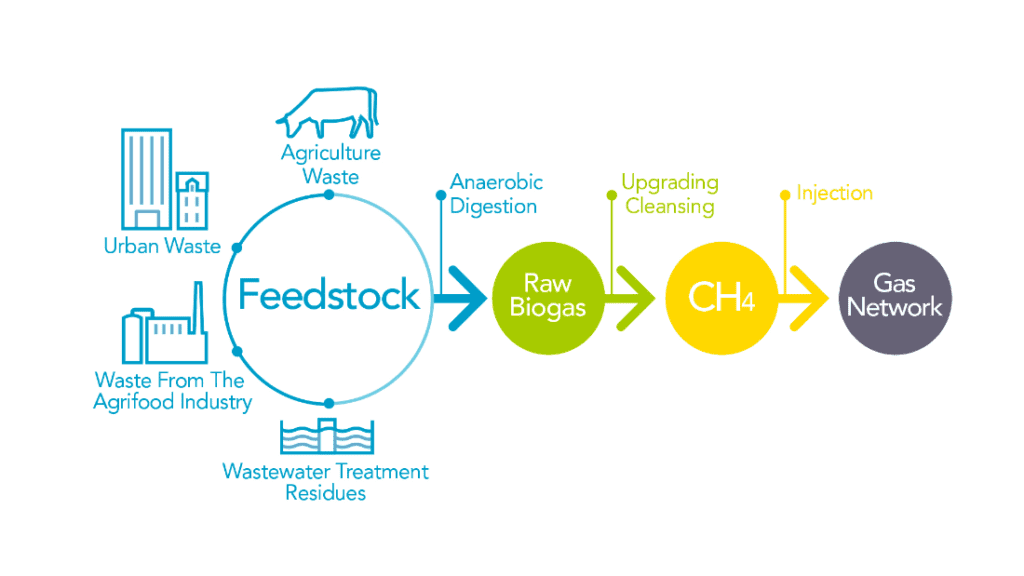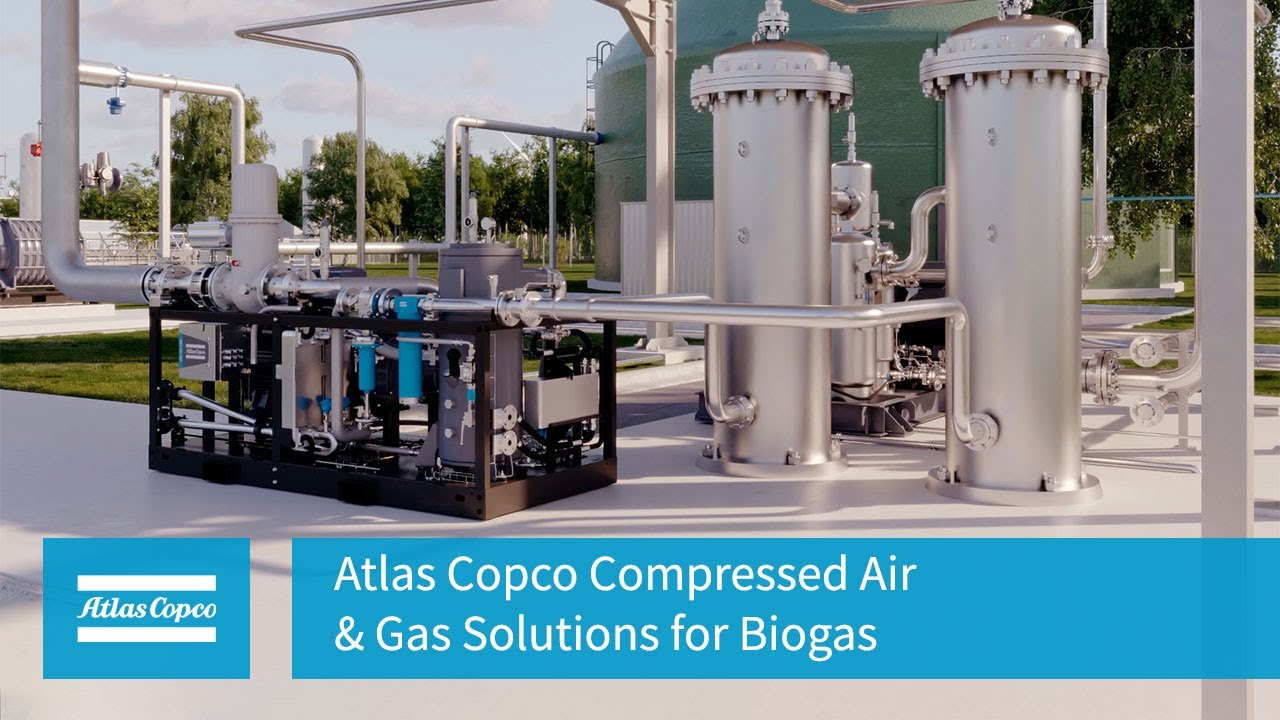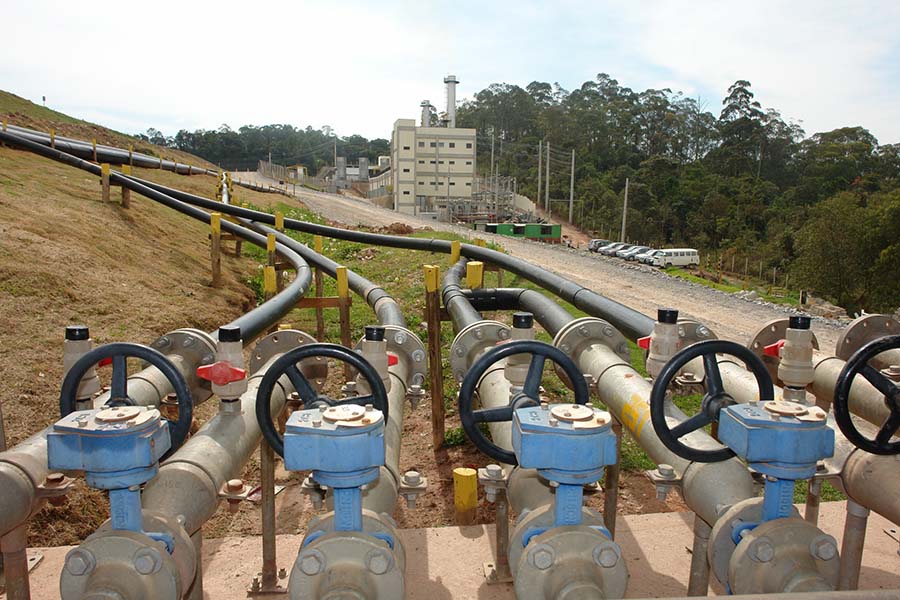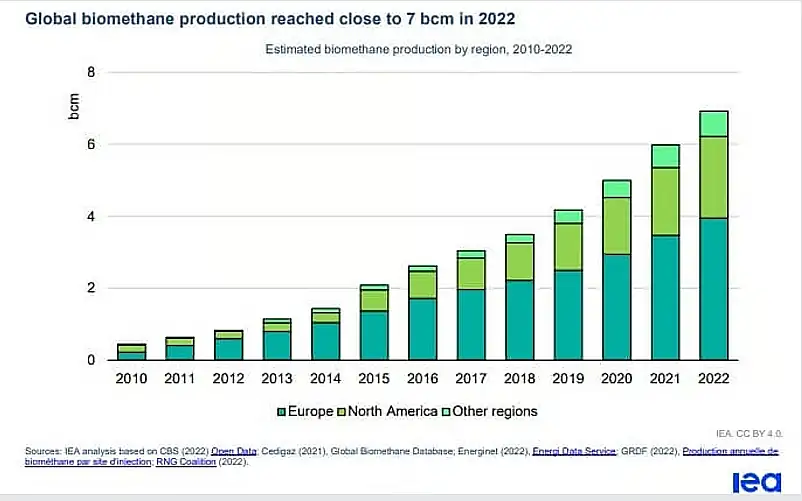In what way is biomethane produced? Read this to find out!
Key Takeaways
- Biomethane is produced by upgrading biogas through purification processes, primarily removing carbon dioxide and impurities.
- The production process heavily relies on anaerobic digestion, where microorganisms break down organic matter in the absence of oxygen.
- Common feedstocks for biomethane include agricultural waste, food scraps, and animal manure.
- Biomethane serves as a renewable energy source, reducing reliance on fossil fuels and lowering greenhouse gas emissions.
- Despite its benefits, biomethane production faces challenges such as high initial costs and the need for advanced technology.
The Process of Producing Biomethane
Biomethane production is an intriguing process that transforms organic waste into a valuable energy resource. This process not only helps in managing waste but also contributes significantly to renewable energy generation. The transformation from waste to energy involves several stages, each crucial in ensuring the quality and efficiency of the biomethane produced.
Understanding the process of producing biomethane begins with comprehending its primary ingredient: biogas. Biogas is a mixture of gases, predominantly methane and carbon dioxide, produced through the breakdown of organic matter in an oxygen-free environment. The journey from biogas to biomethane involves purifying this gas mixture to isolate methane, which is the energy-rich component.
The global push towards sustainable energy sources has put biomethane in the spotlight. Its production not only reduces greenhouse gas emissions but also provides a cleaner alternative to fossil fuels. Let’s delve deeper into the stages involved in biomethane production.

Introduction to Biomethane Production
Biomethane production starts with the collection of organic materials, which serve as feedstocks. These materials are typically waste products such as agricultural residues, food scraps, and animal manure. Once collected, these materials undergo a series of processes to convert them into biogas.
The heart of biomethane production lies in the anaerobic digestion process. This natural process involves microorganisms breaking down organic matter in the absence of oxygen, resulting in the production of biogas. The biogas is then captured and subjected to various purification processes to produce biomethane.
Defining Biomethane and Its Role in Renewable Energy
Biomethane, often referred to as renewable natural gas, is essentially purified biogas. It is composed mainly of methane, making it a potent source of energy. The purification process involves removing impurities and carbon dioxide from biogas, resulting in a cleaner, more efficient fuel. To learn more about how biomethane is produced, visit this detailed guide.
The role of biomethane in renewable energy is significant. It offers a sustainable alternative to conventional natural gas, helping to reduce reliance on fossil fuels. Moreover, by utilizing waste products as feedstocks, biomethane production aids in waste management and contributes to a circular economy.

“ENGIE Global Energy Management & Sales” from gems.engie.com and used with no modifications.
Core Components of Biomethane Production
The production of biomethane involves several core components, each playing a vital role in the overall process. Understanding these components is essential to appreciate the complexity and efficiency of biomethane production.
Key components include the feedstocks used, the anaerobic digestion process, and the purification techniques employed. Each of these components contributes to the quality and sustainability of the biomethane produced.
Key Organic Feedstocks
The choice of feedstocks is crucial in biomethane production. Common feedstocks include agricultural waste, food scraps, and animal manure. These materials are rich in organic content, making them ideal for anaerobic digestion.
The Anaerobic Digestion Process
Anaerobic digestion is a biological process where microorganisms break down organic matter in the absence of oxygen, producing biogas as a byproduct.
This process occurs in large, air-tight tanks where the organic materials are stored. The absence of oxygen creates an ideal environment for anaerobic microbes to thrive and break down the organic matter. The result is a mixture of gases, primarily methane and carbon dioxide, known as biogas.
Anaerobic digestion is a natural process that mimics the conditions found in landfills. However, in a controlled environment, it becomes more efficient and sustainable, allowing for the capture and utilization of the biogas produced.
Scrubbing and Purifying Biogas
Once biogas is produced, it undergoes scrubbing and purification to remove impurities and carbon dioxide. This step is crucial in converting biogas into biomethane, ensuring a high methane content for efficient energy production.
Upgrading Biogas to Biomethane
Upgrading biogas to biomethane involves several technologies, including water scrubbing, membrane separation, and chemical absorption. These technologies help isolate methane, resulting in a cleaner and more efficient fuel source. For further insights, consider exploring the compressed biogas process.

“Viaspace : biomethane” from www.viaspace.com and used with no modifications.
Methods of Biogas Upgrading
Biogas upgrading is a critical step in the production of biomethane, involving the removal of carbon dioxide and other impurities to increase the methane concentration. There are several methods employed to achieve this, each with its own advantages and limitations. One of the most common methods is water scrubbing, which uses water to absorb carbon dioxide and other trace gases. This method is effective and relatively simple, making it a popular choice for many biogas plants.
Innovative Purification Technologies
Beyond traditional methods, innovative purification technologies are emerging to enhance the efficiency of biogas upgrading. Membrane separation is one such technology that uses semi-permeable membranes to separate methane from other gases. This method is highly efficient and offers flexibility in operation, allowing for adjustments based on the specific composition of the biogas.
Chemical absorption is another advanced technique, utilizing chemical solvents to selectively absorb carbon dioxide. This method is particularly effective for biogas with high carbon dioxide content, ensuring a high-purity biomethane output. The choice of technology often depends on factors such as the scale of production, the composition of the biogas, and economic considerations.
Adsorption processes, such as pressure swing adsorption (PSA), are also gaining traction. PSA involves the use of adsorbent materials that selectively capture carbon dioxide under high pressure, releasing purified methane. This method is advantageous due to its ability to operate continuously and its relatively low energy requirements.
- Water Scrubbing: Utilizes water to absorb impurities, simple and cost-effective.
- Membrane Separation: Employs membranes for efficient methane separation, offering operational flexibility.
- Chemical Absorption: Uses chemical solvents for high-purity output, ideal for high carbon dioxide content.
- Pressure Swing Adsorption: Involves adsorbent materials for continuous operation with low energy needs.
The Role of Compression and Storage
Once biomethane is purified, it must be compressed and stored for distribution and use. Compression increases the energy density of biomethane, making it easier to transport and store. This step is crucial for integrating biomethane into existing natural gas infrastructure, allowing it to be used in a variety of applications, from electricity generation to transportation fuel.

“Compressed Air and Oxygen for Biogas …” from www.atlascopco.com and used with no modifications.
Alternative Biomethane Production Routes
While anaerobic digestion is the primary method for producing biomethane, alternative routes are also being explored to diversify production and enhance sustainability. These methods offer unique advantages and can complement traditional biomethane production techniques.
Landfill Gas Collection
Landfills are a significant source of methane emissions, as organic waste decomposes under anaerobic conditions. Capturing this landfill gas not only reduces greenhouse gas emissions but also provides a valuable source of biomethane. The process involves collecting the gas through a series of wells and pipes installed in the landfill, followed by purification to produce biomethane.

“Choosing Landfill Gas and Leachate …” from www.btlliners.com and used with no modifications.
This method is particularly beneficial for waste management, turning a potential environmental hazard into a renewable energy resource. Landfill gas collection systems can be implemented in existing landfills, providing an additional revenue stream and contributing to sustainability goals.
Thermal Gasification Method
Thermal gasification is an innovative method that involves converting solid biomass into a gas mixture through high-temperature processes. The resulting syngas, composed of hydrogen and carbon monoxide, undergoes further processing to produce methane. This method is advantageous as it can utilize a wide range of feedstocks, including agricultural residues and forestry waste.
Applications and Environmental Impact of Biomethane
Biomethane serves as a versatile energy source with numerous applications across different sectors. Its use contributes significantly to reducing carbon emissions and promoting sustainable energy practices.
From electricity generation to transportation fuel, biomethane offers a renewable alternative to conventional fossil fuels. Its integration into existing energy systems is crucial for achieving energy transition goals and mitigating climate change impacts. Learn more about biogas and biomethane and their role in sustainable energy solutions.
Utility in Electricity Generation
Biomethane can be used to generate electricity in power plants, providing a clean and reliable energy source. It can be fed into natural gas turbines or engines, producing electricity with lower emissions compared to coal or oil. This application is particularly important in regions with high renewable energy targets, supporting grid stability and energy security.
Integration with Transportation Fuel
In the transportation sector, biomethane can be used as a vehicle fuel, either as compressed natural gas (CNG) or liquefied natural gas (LNG). This application helps reduce emissions from road transport, which is a significant source of air pollution and greenhouse gases. Vehicles powered by biomethane produce fewer particulates and nitrogen oxides, contributing to cleaner air and healthier communities.
Environmental Benefits and Sustainability
The environmental benefits of biomethane production are substantial. By utilizing organic waste, biomethane production helps reduce landfill emissions and promotes waste recycling. The use of biomethane as a renewable energy source reduces reliance on fossil fuels, lowering carbon emissions and supporting climate change mitigation efforts.
Overall, biomethane production and use represent a crucial step towards a more sustainable and resilient energy future. By investing in biomethane technologies and infrastructure, we can harness the full potential of this renewable resource, contributing to a cleaner and more sustainable world.
Challenges and Future Prospects
As promising as biomethane production is, it does face certain challenges that need addressing for its full potential to be realized. High initial investment costs and the need for advanced technology can be barriers to entry. Moreover, logistical challenges in collecting and transporting feedstocks can affect production efficiency. However, the future of biomethane looks bright, with ongoing innovations and increasing global demand for renewable energy sources.
Current Limitations in Biomethane Production
One of the primary limitations in biomethane production is the high initial cost associated with setting up biogas plants and upgrading technologies. This can deter potential investors and slow down the adoption of biomethane as a mainstream energy source. Additionally, the availability and consistency of feedstock supply can pose challenges, as seasonal variations in agricultural waste and other organic materials can impact production levels.

Global Perspective and Market Trends
Globally, the biomethane market is witnessing significant growth, driven by government policies promoting renewable energy and the increasing need for sustainable waste management solutions. Europe is leading the way in biomethane production, with countries like Germany and Sweden setting ambitious targets for renewable gas integration. In the United States, the Renewable Fuel Standard program is encouraging the use of biomethane as a transportation fuel, further boosting market growth. For more insights on renewable energy systems, explore the integration of biogas systems into the energy system.
Future Innovations and Technological Advances
Innovation is key to overcoming the current limitations of biomethane production. Researchers are exploring new feedstocks, such as algae, and advanced technologies like microbial electrosynthesis to enhance production efficiency. Additionally, improvements in purification techniques and the development of decentralized biogas systems can make biomethane production more accessible and economically viable.
- Exploring alternative feedstocks like algae for increased production.
- Developing advanced purification technologies for higher efficiency.
- Implementing decentralized biogas systems for better accessibility.
- Enhancing microbial electrosynthesis techniques for improved output.
Besides technological advancements, policy support and public awareness are crucial for the future success of biomethane. Governments and organizations need to work together to create favorable conditions for investment and development in this sector.
With continued innovation and support, biomethane has the potential to become a cornerstone of the global renewable energy landscape, providing a sustainable and reliable energy source for future generations.

“Global biomethane production hits new high” n 2022″ from IEA Database and used with no modifications.
FAQs on Biomethane Production
Understanding biomethane production can be complex, but these frequently asked questions can help clarify some common queries and misconceptions. For instance, the differences between anaerobic digestion and gasification are often misunderstood, and exploring these distinctions can provide valuable insights.
What is the main difference between biogas and biomethane?
Biogas is a mixture of gases produced from the anaerobic digestion of organic matter, primarily composed of methane and carbon dioxide. Biomethane, on the other hand, is the purified form of biogas with a higher methane concentration, making it suitable for use as a renewable natural gas.
In essence, biomethane is biogas that has undergone purification processes to remove impurities and carbon dioxide, resulting in a cleaner and more efficient fuel.
How do landfills contribute to biomethane production?
Landfills contribute to biomethane production by providing a source of biogas. As organic waste decomposes under anaerobic conditions in landfills, methane is produced. This landfill gas can be captured and purified to produce biomethane, turning a potential environmental hazard into a renewable energy resource.
Landfill gas collection systems are implemented in many landfills to capture and utilize this gas, reducing greenhouse gas emissions and providing an additional energy source. For more information, you can explore an introduction to biogas and biomethane.
Why is purification necessary in biomethane production?
Purification is necessary in biomethane production to remove impurities and carbon dioxide from biogas, resulting in a higher concentration of methane. This process ensures that the biomethane produced is of high quality and suitable for use as a renewable natural gas.
Without purification, the presence of impurities and carbon dioxide would reduce the energy content and efficiency of the biomethane, making it less viable as an energy source.
What are the main applications of biomethane?
Biomethane has several applications across different sectors. It can be used for electricity generation, providing a clean and reliable energy source. In the transportation sector, biomethane can be used as a vehicle fuel, either as compressed natural gas (CNG) or liquefied natural gas (LNG). For more information, you can read about biomethane on the European Commission's website.
Additionally, biomethane can be integrated into existing natural gas infrastructure, allowing it to be used for heating and cooking in residential and commercial settings. For more information on how biomethane production compares to other methods, check out this comparison of anaerobic digestion and gasification.
How does biomethane production impact the environment?
Biomethane production has a positive impact on the environment by reducing greenhouse gas emissions and promoting sustainable waste management. By utilizing organic waste as feedstocks, biomethane production helps reduce landfill emissions and supports a circular economy.
Moreover, the use of biomethane as a renewable energy source reduces reliance on fossil fuels, lowering carbon emissions and contributing to climate change mitigation efforts.
Biomethane is a renewable energy source produced through the anaerobic digestion of organic matter. This process involves microorganisms breaking down organic materials in the absence of oxygen, resulting in the production of biogas. The biogas is then purified to remove impurities, leaving behind biomethane. For a detailed explanation of how biomethane is produced, including the steps involved in its purification, you can explore additional resources.





